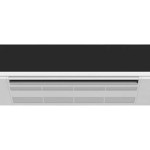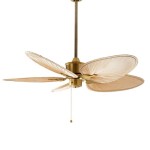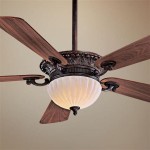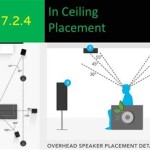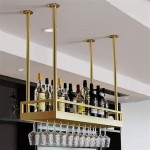Curtain Rod Hanging From Ceiling: A Comprehensive Guide
Suspending curtain rods from the ceiling provides a versatile and aesthetically pleasing alternative to traditional wall-mounted installations. This approach is particularly suitable for situations where wall space is limited, where floor-to-ceiling coverage is desired, or where architectural features necessitate a different mounting solution. Understanding the nuances of ceiling-mounted curtain rod installations, from selecting appropriate hardware to executing the installation process, is essential for achieving a successful and durable result.
The decision to hang curtain rods from the ceiling can stem from various practical and design considerations. For instance, in rooms with large windows or sliding glass doors, a ceiling-mounted rod allows curtains to span the entire width and height of the opening, maximizing light blockage and privacy. Furthermore, in rooms with limited wall space due to built-in shelves, cabinetry, or unconventional layouts, a ceiling-mounted rod provides a viable solution for hanging curtains without obstructing existing fixtures or compromising the room's design. Ceilings also present a clean surface, often free from the visual clutter found on walls, creating a minimalist and modern aesthetic.
This article will delve into the various aspects of hanging curtain rods from the ceiling, covering topics ranging from hardware selection to installation techniques, and considerations for different ceiling types. It aims to provide a comprehensive guide for homeowners, interior designers, and contractors seeking to implement this increasingly popular curtain hanging method.
Key Point 1: Hardware Selection and Considerations
Selecting the appropriate hardware is paramount for a successful ceiling-mounted curtain rod installation. The weight of the curtains, the type of ceiling material, and the desired aesthetic all play crucial roles in determining the optimal hardware choices.
The first critical component is the curtain rod itself. Available in a wide variety of materials (e.g., steel, aluminum, wood, wrought iron) and styles (e.g., single rod, double rod, traverse rod), the selection should be based on the desired aesthetic and the weight-bearing capacity required. Heavier curtains, such as blackout curtains or lined drapes, necessitate thicker and more robust rods to prevent sagging or bending. The span of the rod also needs to be considered, as longer spans require additional support brackets to prevent sagging in the middle.
The next crucial element is the ceiling mounting bracket. These brackets attach the curtain rod to the ceiling and bear the entire weight of the curtains. Several types of ceiling mounting brackets are available, each designed for specific weight capacities and ceiling materials. Standard brackets typically consist of a metal plate that attaches to the ceiling with screws and a socket or hook that holds the curtain rod. Heavy-duty brackets, often constructed from thicker steel or cast iron, are designed to support heavier curtains and are recommended for longer rod spans.
Selecting the correct fasteners for attaching the brackets to the ceiling is equally important. The type of fastener depends directly on the ceiling material. For drywall ceilings, drywall anchors are essential. These anchors provide a secure hold in the relatively soft drywall material. Different types of drywall anchors are available, including plastic anchors, metal anchors, and self-drilling anchors. The weight capacity of the chosen anchor should be carefully considered, and it is generally advisable to use anchors with a higher weight rating than the actual weight of the curtains to provide a safety margin. For plaster ceilings, similar anchors can be used, but care must be taken to avoid cracking or damaging the plaster during installation.
If the ceiling is concrete, brick, or other solid material, masonry anchors are required. These anchors are designed to expand within the drilled hole, providing a secure grip. Hammer drill bits are typically needed to create the pilot holes for masonry anchors. The appropriate size and type of masonry anchor will depend on the weight of the curtains and the diameter of the screw being used. In situations where the ceiling has wooden joists or beams, it is highly recommended to attach the mounting brackets directly to these structural members. Wood screws can be used for this purpose. Using joist finders to locate the joists accurately helps ensure a solid and secure attachment. Attaching to joists is the preferred method as it provides the strongest and most reliable support, minimizing the risk of the curtain rod pulling away from the ceiling over time.
Specialized hardware, such as ceiling track systems, can also be utilized for more complex installations. These systems feature a track that runs along the ceiling, allowing curtains to be easily moved and positioned. Track systems are particularly useful for creating room dividers or for hanging curtains in curved or irregular spaces. The hardware selection process should also include considering the aesthetic compatibility of the brackets and fasteners with the overall design of the room. Brackets are available in a variety of finishes, including brushed nickel, oil-rubbed bronze, and matte black, allowing homeowners to choose options that complement the curtain rod and other hardware in the room. Coordinating the finishes creates a cohesive and polished look.
Key Point 2: Installation Process: A Step-by-Step Guide
The installation process for ceiling-mounted curtain rods requires careful planning and precise execution. Following a step-by-step guide ensures a secure and aesthetically pleasing result.
First, accurate measurements are essential. Determine the desired length and width of the curtain rod, considering the overall size of the window or area to be covered. Mark the desired location of the mounting brackets on the ceiling, ensuring that they are evenly spaced and aligned. Using a level to ensure that the brackets are installed at the same height is crucial, preventing the curtain rod from appearing tilted. In many cases, it is recommended that the curtain rod extend beyond the width of the window to maximize light control and create a more visually appealing appearance. The extension distance depends on personal preference and the overall design of the room.
Next, prepare the ceiling surface for installation. Clean the area where the brackets will be mounted to remove any dust, dirt, or debris. Use a stud finder to locate ceiling joists, if applicable. Marking the location of the joists clearly helps ensure that the brackets are attached to solid structural members whenever possible. If joists are not accessible, select appropriate drywall or masonry anchors based on the ceiling material and curtain weight.
Drill pilot holes at the marked locations using a drill bit appropriate for the selected anchor type. Ensure that the pilot holes are deep enough to accommodate the anchors fully. Insert the anchors into the pilot holes, tapping them gently with a hammer if necessary to ensure a flush fit. For drywall anchors, follow the manufacturer's instructions for installation, as different types of anchors require different installation techniques. Some anchors require pre-drilling, while others are self-drilling. For masonry anchors, use a hammer drill to create a pilot hole of the appropriate size and depth. Clean the hole thoroughly before inserting the anchor.
Attach the mounting brackets to the ceiling using screws that are compatible with the selected anchors. Tighten the screws securely, but avoid over-tightening, as this can damage the anchors or the ceiling material. Ensure that the brackets are securely fastened and do not wobble or move. Consider using washers to distribute the pressure of the screws and prevent them from pulling through the brackets. Once the brackets are securely mounted, install the curtain rod by placing it into the sockets or hooks on the brackets. Ensure that the rod is properly seated and level. Test the stability of the installation by gently tugging on the curtain rod. If the rod feels loose or unstable, re-tighten the screws or consider using larger anchors.
Finally, hang the curtains on the rod. Ensure that the curtains are evenly distributed and that the hooks or rings are properly attached. Test the movement of the curtains along the rod to ensure smooth and effortless operation. Make any necessary adjustments to the curtain rod or brackets to achieve the desired appearance and functionality.
Key Point 3: Considerations for Different Ceiling Types and Potential Challenges
Different ceiling types present unique challenges that must be addressed during the curtain rod installation process. Understanding these challenges and implementing appropriate solutions is crucial for a successful and safe installation.
Drywall ceilings, the most common type, are relatively easy to work with, but they offer limited load-bearing capacity. Using drywall anchors is essential for distributing the weight of the curtains over a larger area. Choosing anchors with a higher weight rating than the actual weight of the curtains provides a safety margin. Over-tightening screws in drywall can strip the screw holes, rendering the anchor ineffective. Avoid over-tightening and consider using larger anchors if the screws are not holding properly.
Plaster ceilings, often found in older homes, can be brittle and prone to cracking. Drilling into plaster requires extra care to avoid damaging the surrounding material. Using a sharp drill bit and applying gentle pressure can help prevent cracking. Consider using painter's tape to mark the drilling location and provide a cleaner edge. Plaster can also be quite thick, requiring longer screws and anchors to reach a solid backing material. If the plaster is particularly fragile, consider using a specialized plaster anchor that is designed to minimize damage.
Concrete ceilings offer excellent load-bearing capacity but require specialized tools and techniques for drilling. A hammer drill is necessary to create pilot holes in concrete. Using masonry anchors designed for concrete is essential. Ensure that the anchors are properly sized and installed according to the manufacturer's instructions. Drilling into concrete can generate a significant amount of dust. Wear safety glasses and a dust mask to protect yourself from debris. Consider using a vacuum cleaner to collect the dust as you drill.
Suspended ceilings, also known as drop ceilings, consist of lightweight tiles suspended from a metal grid. These ceilings are not designed to support heavy loads. Attaching curtain rods directly to the ceiling tiles is not recommended, as the tiles are likely to crack or collapse. Instead, it is necessary to attach the mounting brackets to the structural framing above the suspended ceiling. This may require removing the ceiling tiles to access the framing. Locate the joists or beams and attach the brackets using wood screws or other appropriate fasteners. It's important to consider the weight of the curtains and the strength of the framing when determining the appropriate fasteners. Carefully replace the ceiling tiles after the brackets are installed.
Sloped ceilings present a unique challenge for curtain rod installation. Standard curtain rods may not hang properly on a sloped ceiling. Specialized brackets designed for sloped ceilings are available. These brackets allow the curtain rod to hang vertically, regardless of the angle of the ceiling. Accurately measuring the angle of the slope is essential for selecting the correct type of bracket. Ensure that the brackets are securely attached to the ceiling and that the curtain rod is properly aligned. This will help prevent the curtains from sliding down the slope.
Throughout the installation process, it is important to prioritize safety. Wear safety glasses to protect your eyes from debris. Use a ladder safely, ensuring that it is stable and properly positioned. If you are not comfortable performing the installation yourself, consider hiring a professional contractor.

Hanging Curtains From The Ceiling Home

Rod Desyne Bun Ceiling Curtain

How To Hang Curtains The Right Way Painting By Penny

Pin Page

How To Hang Curtains From The Ceiling Deconovo

How To Hang Curtains With Crown Molding The Shade Store

Diy Ceiling Mounted Curtain Rods With Step By Instructions Simplified Building

Top Tips For Hanging Curtains From The Ceiling Well Dressed Window

Hanging Curtains From The Ceiling Home

Silver Ceiling Mount Hanging Curtain Rod With Wall Mounted Bracket By Room Dividers Now Walmart Com


